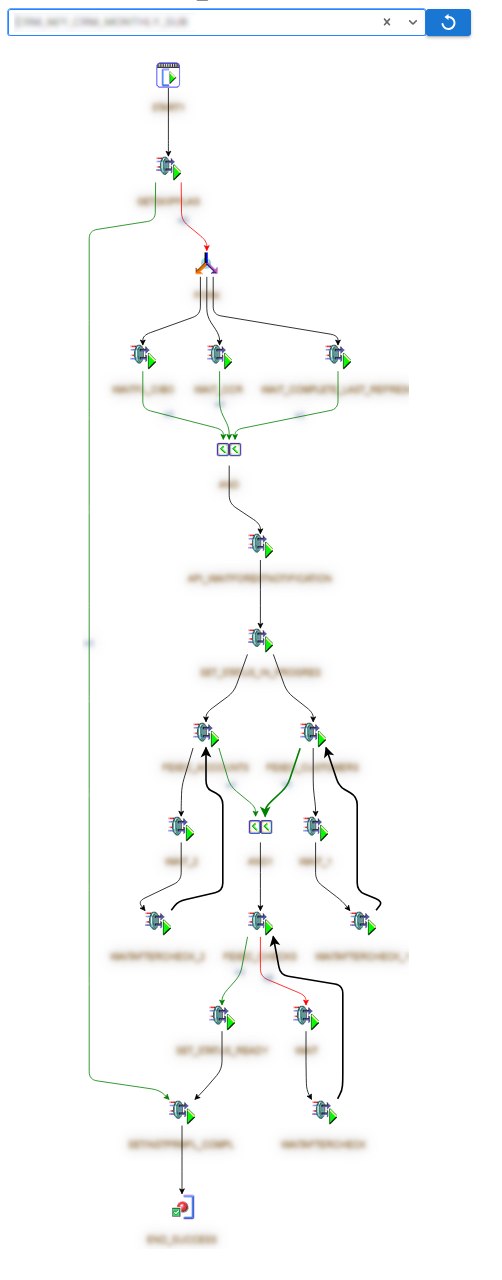
Enhancing OWB to ODI Conversion: Adding Loop Support and a Web-Based Monitoring Tool
In the data integration space, automating and enhancing workflows can significantly boost efficiency and transparency. At Neurocom, our software bridges the gap between Oracle Warehouse Builder (OWB) and Oracle Data Integrator (ODI) by seamlessly converting OWB process flows into ODI load plans. Today, we’re excited to share recent advancements that take this tool to the next level: supporting loops in ODI load plans and introducing a modern web application for monitoring executions and visualizing load plans.
Supporting Loops in ODI Load Plans
The Challenge
Loops are an integral part of process flows in data integration. They enable iterative execution of tasks based on specific conditions, such as processing data for multiple partitions or dynamically managing dependencies. OWB process flows often include loops, but converting these structures into ODI load plans has traditionally been challenging due to differences in their execution frameworks.
The Solution
We’ve extended our conversion logic to map OWB loop structures into ODI’s native capabilities. Here’s how it works:
- Identifying Loops in OWB: The software parses the OWB process flow to detect loop constructs, including
WHILE,FOR, andDO-WHILEloops. - Mapping to ODI Constructs: These loops are translated into ODI’s equivalent execution logic using variables and conditional steps.
With this enhancement, users can confidently migrate complex workflows without sacrificing functionality, enabling a smoother transition to ODI.
Introducing a Web-Based Monitoring Tool
The Need for Enhanced Visibility
Managing and monitoring load plans can become cumbersome without a centralized interface. Execution logs, error tracing, and progress tracking often require manual effort, leading to inefficiencies.
Key Features of the Web Application
To address this, we’ve developed a web-based monitoring application designed to enhance usability and provide actionable insights. Key features include:
Graphical Visualization: Load plans are displayed as graphs, showing the flow of tasks, dependencies, and execution statuses.
Execution Tracking:
- Real-time progress updates with visual indicators for success, failure, or in-progress tasks.
- Historical execution logs for auditing and debugging.
Technical Architecture
The web application leverages modern frameworks for a seamless user experience:
- Frontend: Built with React for dynamic and responsive UI components.
- Backend: Spring Boot layer integrated with the ODI repository for fetching execution data.
- Database: Stores historical data and configuration settings.
- Deployment: Containerized with Docker for easy deployment and scalability.
Benefits to Users
- Seamless Migration: By supporting loops, our software ensures greater parity between OWB and ODI workflows.
- Improved Monitoring: The web application provides unparalleled transparency and control, empowering users to manage their load plans efficiently.
- Enhanced Productivity: Automation and real-time insights reduce manual effort, allowing teams to focus on higher-value tasks.
What’s Next?
We’re committed to continuous innovation. Future updates may include:
- Support for additional OWB constructs.
- Advanced analytics and predictive capabilities in the monitoring tool.
- Integration with third-party orchestration and alerting systems.
With these enhancements, Neurocom is setting a new standard in data integration, making it easier than ever for organizations to transition from OWB to ODI while maximizing efficiency and visibility.
If you have questions or would like to see a demo of these new features, feel free to reach out.
